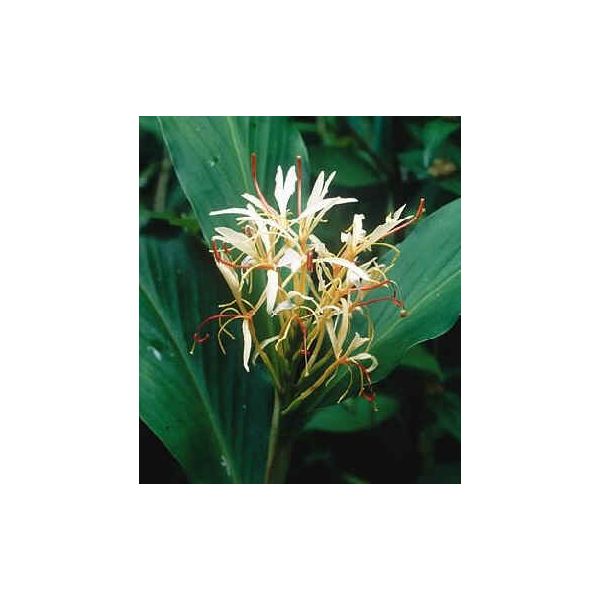Hedychium Spicatum Seeds (Ginger Seeds)
Hedychium Spicatum Seeds (Ginger Seeds)
One of the easiest plant to grow. Grown in gardens, it needs fertilizers in order to see it at its best.

Delivery
All orders shipped with UPS Express.
Always free shipping for orders over US $250.
All orders are shipped with a UPS tracking number.
Returns
Items returned within 14 days of their original shipment date in same as new condition will be eligible for a full refund or store credit.
Refunds will be charged back to the original form of payment used for purchase.
Customer is responsible for shipping charges when making returns and shipping/handling fees of original purchase is non-refundable.
All sale items are final purchases.
Help
Give us a shout if you have any other questions and/or concerns.
Email: contact@domain.com
Phone: +1 (23) 456 789
Availability: In stock
SKU
Hedychium Spicatum
Hedychium Spicatum is also known as Spiked Ginger Lily, Sandharlika, Kapur kachri, and Takhellei (Manipuri) and is native to Southeast Asia. If you do not like this plant then you cannot be pleased!
This is one of the easiest to grow, and the flowering period is at the early end of the Hedychium spectrum.
Hedychium Spicatum is a very variable species and one of the hardiest, although not the most spectacular of Hedychium, it is one of the most floriferous for the open garden and with flowers from 1 to 1.5m which makes it a worth while plant for the herbaceous border. This plant blooms from August to October.
H. Spicatum has large, spidery, 5cm (2in) wide, clusters of white flowers loosely arranged on the raceme, with only one flower per bract. The white labellum?s of H. Spicatum is deeply cleft with pointed tips and is distinctly stained orange at the base. The filament and anther are also orange. They are lightly perfumed.
The Spicatum plant tends to set seed readily and these seed pods give the bonus of a second season of interest. When ripe, the green seed capsules burst open to reveal the orange linings with the seeds enclosed in bright scarlet arils (fleshy coating around the seeds) in late autumn.
Spiked ginger lily is one of those species that is naturally deciduous before the onset of frost and some forms give good yellow autumn color, before they need to be cut down. Some plants exhibit a marked red/brown tinge on the back of the thin leaves and the intensity of the coloration varies.
In India they burn the dried rhizomes as incense! Additionally powdered rhizome is used for perfuming chewing tobacco, in love spells and for inducing feelings of goodwill, while the oil derived from the rhizomes is used in perfumery but also has antibiotic properties. Finally you can make floor mats from the leaves. The rootstock yields 4% essential oil. This oil, which has a scent somewhat like hyacinths, is so powerful that a single drop will render clothes highly perfumed for a considerable period.
Hardiness zones :
8-11 (-10c/15f, 4c/40f). Hedychium Spicatum requires a rich, moist, well-drained soil and a sunny position. They can grow in a sunny border as a summer sub-tropical bedding plant. The plants are not very hardy; they tolerate temperatures down to about -10øc and can grow at the foot of a south-facing wall in the milder areas, if provided with good mulch in the winter. The tubers should be cover with only a few inches of soil.
Most of the plants, grown in gardens, need fertilizers in order to see them at their best. For this plant, the suggested fertilizer program would be based upon a typical mix of: 3 parts Nitrogen (N), 2 parts Phosphorous (P) and 3 parts Potassium (K). It is better to grow this one in a conservatory or heated greenhouse although it will happily spend the summer months outdoors in light shade.
| Common name | Ginger |
|---|---|
| Species | Hedychium spicatum |
| Germination | Hedychium Gracile seeds will usually germinate in 20-25 days. Sow seeds about 2mm deep in a Peaty seed sowing mix at about 22øC. Keep the mix moist but not wet. Prick out the seedlings into individual pots when they are large enough to handle and grow them on for at least their first winter in the greenhouse. Keep the plants well watered. Plant out in late spring after the last expected frosts. Germination can take longer. Be patient! Propagation: Division as growth commences in the spring. Dig up the clump and divide it with a sharp spade or knife, making sure that each division has a growing shoot. Larger clumps can be sow out directly into their permanent positions, but it is best to pot up the smaller divisions and grow them on in a greenhouse until they are established. Plant them out in the summer or late in the following spring. |
| Price View | Price Range |

